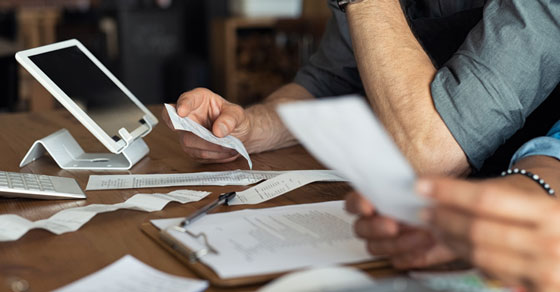

If you’re claiming deductions for business meals or auto expenses, expect the IRS to closely review them. In some cases, taxpayers have incomplete documentation or try to create records months (or years) later. In doing so, they fail to meet the strict substantiation requirements set forth under tax law. Tax auditors are adept at rooting out inconsistencies, omissions and errors in taxpayers’ records, as illustrated by one recent U.S. Tax Court case.
In the case, the taxpayer ran a notary and paralegal business. She deducted business meals and vehicle expenses that she allegedly incurred in connection with her business.
The deductions were denied by the IRS and the court. Tax law “establishes higher substantiation requirements” for these and certain other expenses, the court noted. No deduction is generally allowed “unless the taxpayer substantiates the amount, time and place, business purpose, and business relationship to the taxpayer of the person receiving the benefit” for each expense with adequate records or sufficient evidence.
The taxpayer in this case didn’t provide adequate records or other sufficient evidence to prove the business purpose of her meal expenses. She gave vague testimony that she deducted expenses for meals where she “talked strategies” with people who “wanted her to do some work.” The court found this was insufficient to show the connection between the meals and her business.
When it came to the taxpayer’s vehicle expense deductions, she failed to offer credible evidence showing where she drove her vehicle, the purpose of each trip and her business relationship to the places visited. She also conceded that she used her car for both business and personal activities. (TC Memo 2021-50)
This case is an example of why it’s critical to maintain meticulous records to support business expenses for meals and vehicle deductions. Here’s a list of “DOs and DON’Ts” to help meet the strict IRS and tax law substantiation requirements for these items:
DO keep detailed, accurate records. For each expense, record the amount, the time and place, the business purpose, and the business relationship of any person to whom you provided a meal. If you have employees who you reimburse for meals and auto expenses, make sure they’re complying with all the rules.
DON’T reconstruct expense logs at year end or wait until you receive a notice from the IRS. Take a moment to record the details in a log or diary or on a receipt at the time of the event or soon after. Require employees to submit monthly expense reports.
DO respect the fine line between personal and business expenses. Be careful about combining business and pleasure. Your business checking account shouldn’t be used for personal expenses.
DON’T be surprised if the IRS asks you to prove your deductions. Meal and auto expenses are a magnet for attention. Be prepared for a challenge.
With organization and guidance from your DDK Tax advisor, your tax records can stand up to scrutiny from the IRS. There may be ways to substantiate your deductions that you haven’t thought of, and there may be a way to estimate certain deductions (“the Cohan rule”), if your records are lost due to a fire, theft, flood or other disaster.

